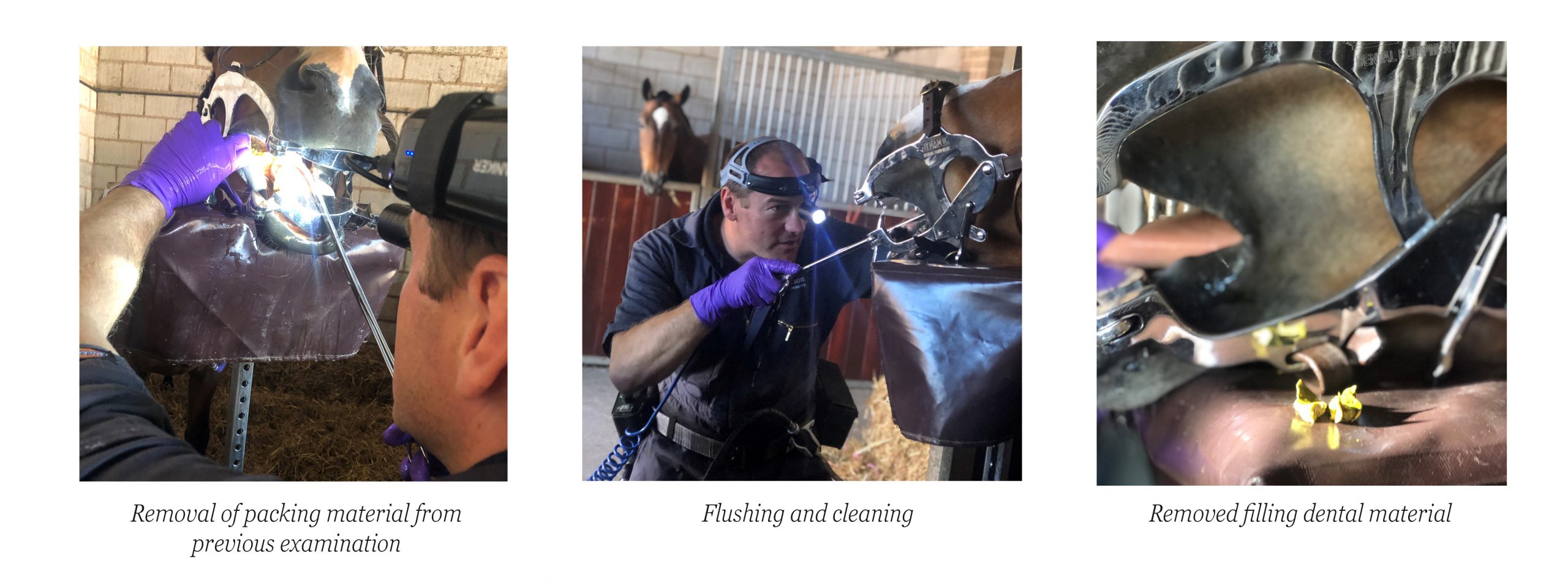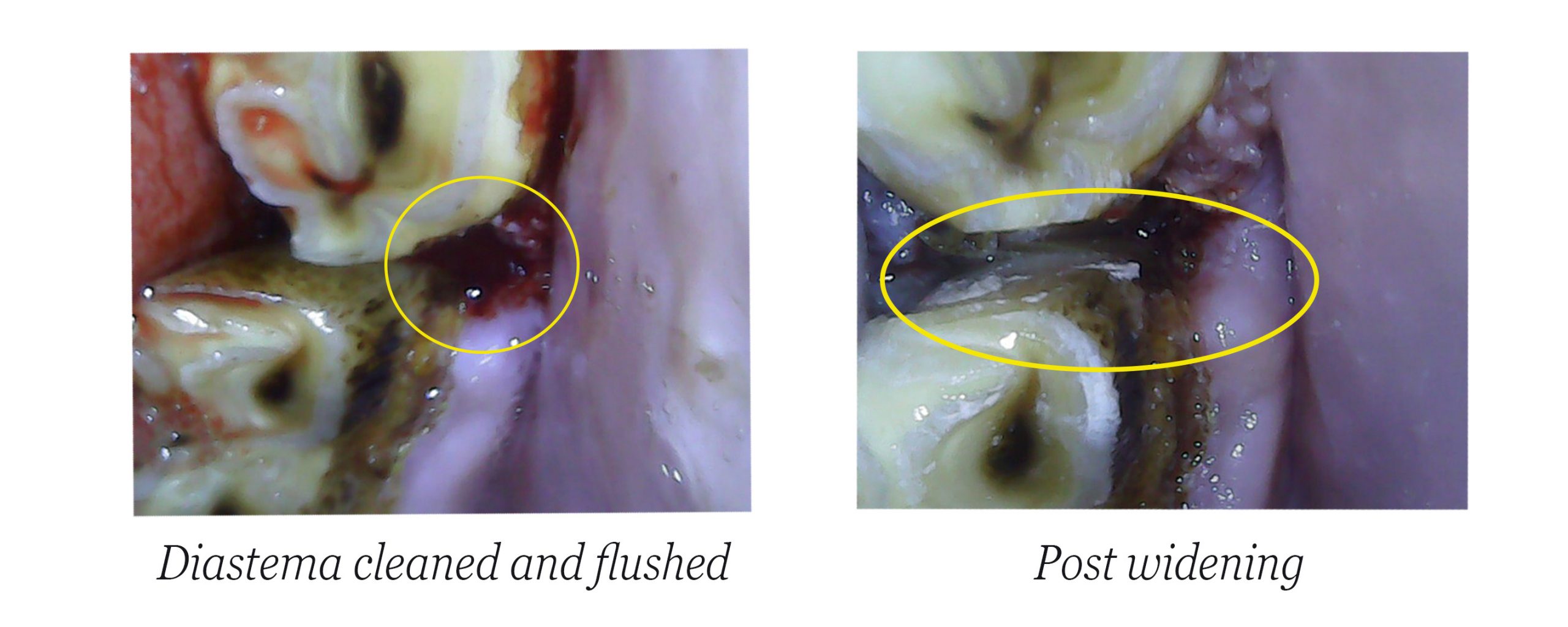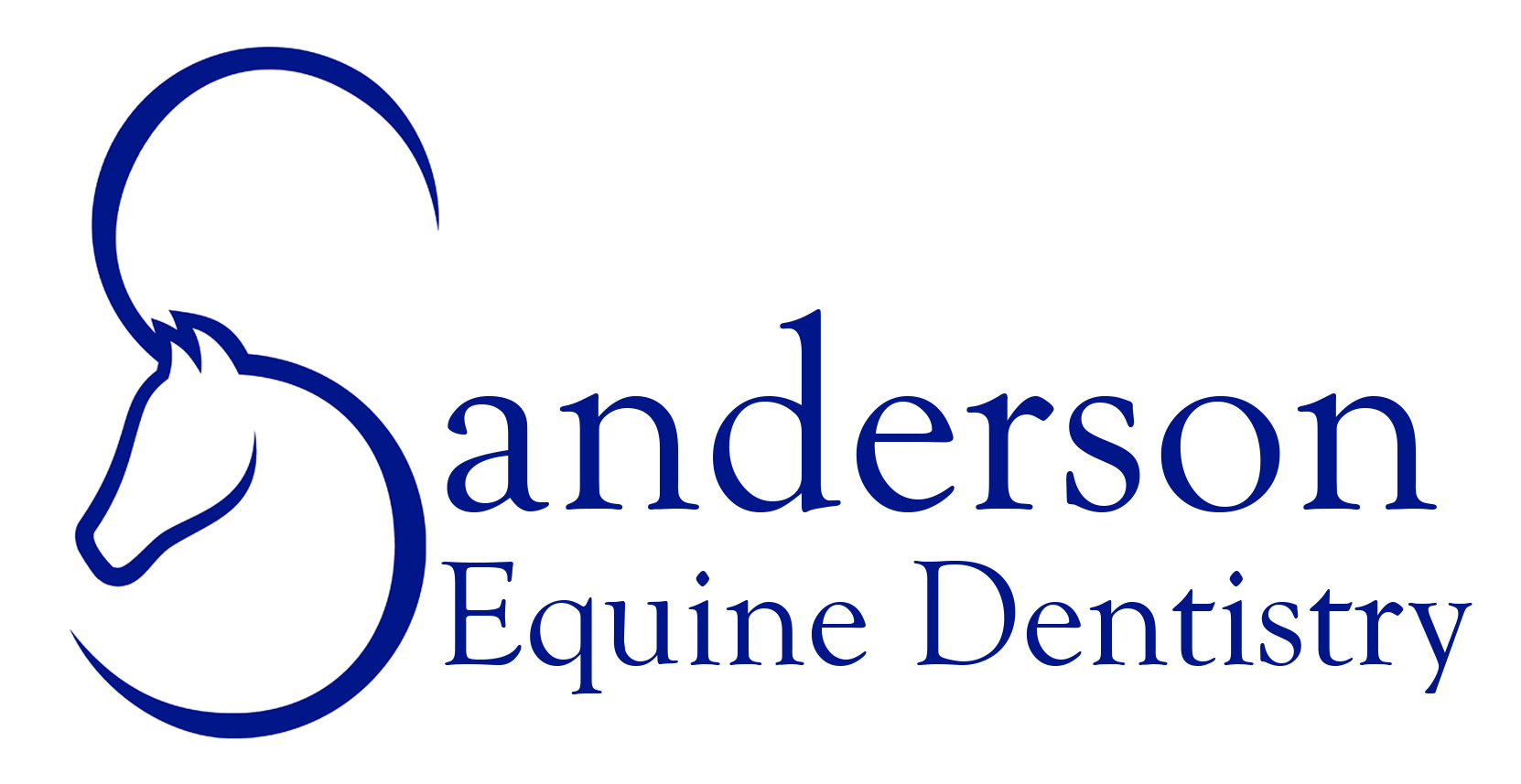Equine Diastemas
What is an Equine Diastema?
Horses cheek teeth (molars and premolars) have evolved over thousands of years to act like a single grinding unit in each arcade. They are packed closely together like building blocks to create the most efficient grinding unit. Sometime through incorrect tooth development, poor oral conformation or due to severe aging changes, a gap can appear, this is called a ‘diastema’ (pleural diastemata). This diastema allows food material to get stuck, the material stagnates and ferments producing bacteria and acid causing the gum to become inflamed and possibly infected, ‘periodontal disease’. The gum will then recede forming a pocket allowing more food to enter, a vicious circle is then created.
As you can imagine this can be very uncomfortable and painful for your horse and will need careful management. We use the term manage rather than treat with diastema because you will rarely cure the problem in a single go and regular revisits are needed to monitor the progress of the diastema and associated periodontal disease.
How to manage a diastema?
You have a few options on managing diastemata depending on location, severity and type, a collaboration of the following may be carried out.
Flushing and picking the diastema and balancing the teeth. Some diastemata occur when overgrown teeth are pushed away from their neighbour by the forces involved in grinding, thus forming a diastema. By rasping overgrowths and generally balancing the mouth you will allow the teeth to migrate back to their correct position. Flushing and picking all the food material will give the gum chance to heal. Removing any excessive ridges opposing the diastema will reduce the piston effect of food getting pushed into the diastema.

Packing. If the diastema and its periodontal disease is more severe then packing the gap can be beneficial. Once the diastema has been thoroughly cleaned and flushed, a small amount of dental impression material (which looks like plasticine) is pushed into the gap. This sets hard within a few seconds, stopping food material from getting stuck and allowing the gum to heal. Certain human dental products such as calcium hydroxide paste and cement can also be used as an antibacterial base layer underneath the impression material.
Diastema partial widening and full widening. This is where the diastema is widened to allow food to fall out more easily, reducing the risk of stagnation and therefore bacteria production. This should only ever be carried out by a veterinary surgeon as your horse will require sedation and possibly pain relief and antibiotics.

Signs there may be a problem;
~Oral pain when eating/ refusal to eat
~Showing strange behaviours while eating, e.g. opening their mouth with rapid tongue movement.
~Difficulty chewing long fibres such as hay/haylage
~Quidding – dropping rolled-up food from their mouth
~Pouching of food in the cheeks
~Showing behavioural issues when ridden, head shaking, stopping and rearing, not happy in the bridle.
~Possible weight loss
Tip for feeding
If you horse has Diastema avoid feeding hard short fibre such as Alfa or Chaff, instead feed a sloppier soaked feed within your bucket. Try and choose softer hay/ haylage. Grass is best but this is not always a suitable diet for all equines.
